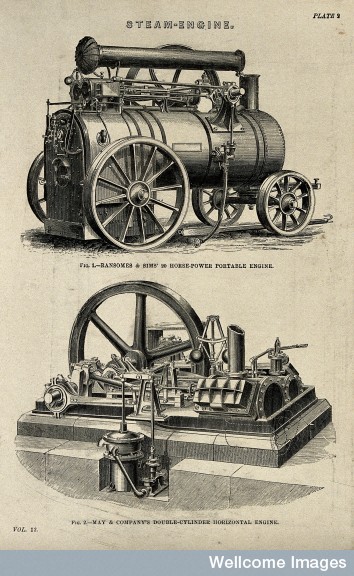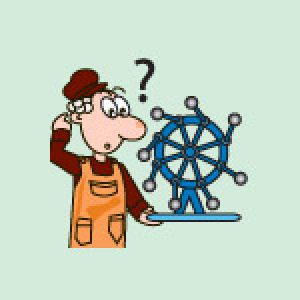Highlights
Prospect of quantum machines inspires new physical laws

The traditional second law of thermodynamics discovered through the study of steam engines is not sufficient to describe the behaviour of much smaller quantum systems, researchers have shown. They found a whole new family of second laws that quantum machines must follow. Image: Wellcome Library, London CC-BY-4.0
It's time to update a physical law discovered by a 19th Century scientist interested in making better steam engines. Researchers from the Centre for Quantum Technologies and their international collaborators have shown that the 'second law of thermodynamics' has a host of cousins at small scales.
"Our work discovering the relevant laws for small systems is important because we can now build machines that are very small, such as quantum computers and nanomachines," says CQT Principal Investigator Stephanie Wehner, one of five researchers on the paper.
The findings were published 9 February in the Proceedings of the National Academy of Sciences.
The second law of thermodynamics concerns entropy – the amount of disorder in a system. The original law says that entropy will always increase, describing things as diverse as the cooling of a cup of coffee, the efficiency of engines and the (future) heat death of the Universe.
"The traditional second law of thermodynamics is sometimes thought of as a statistical law that only holds when there is a vast numbers of particles that make up a system," said Jonathan Oppenheim, a coauthor at University College London. That leaves open the question: does the statistical law hold up when the number of particles gets smaller?
"We find that the standard second law that we know from large systems is not enough to describe thermodynamics applied to small systems, i.e. the tiny machines we can build now. Instead, we find that there is an entire family of second laws, that is, a whole set of equations that dictate thermodynamic behavior at small scales," explains Stephanie. When applied to large systems, all these second laws converge to the traditional one.
"These additional second laws, can be thought of as saying that there are many different kinds of disorder at small scales, and they all tend to increase as time goes on," said co-author Professor Michal Horodecki from the University of Gdansk, Poland.
There's a domestic analogy of the second law that can help explain some of the consequences. Consider the original second law as a rule that a house must get continually messier. It's an idea particularly appealing to those disinclined to tidy. The new laws add subtlety to how mess would spread in a quantum-sized house.
Jonathan says "While a quantum house will get messier rather than tidier, like a normal house, our research shows that the ways in which it can get messier are constrained by a range of extra laws. Stranger still, the way these second laws interact with each other can even make it look like the traditional second law has been violated. For instance, a small system can spontaneously become more ordered when it interacts with another system which barely seems to change. That means some rooms in the quantum house may spontaneously become much tidier, while others only become messier but only imperceptibly."
Stephanie and her student Nelly Ng, who have recently moved to the QuTech centre at the Delft University of Technology, are now working out the practical consequences of these new second laws.
"We're working to apply these second laws to explore the fundamental limits on how efficient small quantum heat engines can be," says Nelly. They have also prepared a paper on the implications for quantum catalysis, available as a preprint.
Learn more
- Stephanie Wehner
- Nelly Ng Huei Ying
- The second laws of quantum thermodynamics (2015). Proceedings of the National Academy of Sciences of the United States of America 112 11
- Press release by University College London on this paper
- Preprint on quantum catalysis
- Jonathan Oppenheim
- Michal Horodecki
- Fernando Brandao
Related Stories
 | Uncertainty avoids perpetual motion machines April 10 2013 |






